Trail Programming & Events
Celebrate Trails Day in Washington, DC | Photo courtesy Brandi Horton
A well-used trail is a successful trail. You may have heard that you only need to “build it and they will come,” but that isn’t always true. Trail advocates and their partners often have to put in the work to promote the trail through a mix of programming and physical amenities. A trail may be underused because people are unaware how to use it—or that it even exists. Trail programming, or any organized use of a space that is designed to attract people to that space, can help bridge this gap. Programming helps ensure that trails are vibrant and valued—that communities know what trails have to offer.
Well-organized activities can give a positive first impression of the trail and also help generate publicity and media attention, attracting even more users. Activities provide opportunities to demonstrate the value and benefits of trails, as people start to associate the trail with ideas such as fun, community and wellness. They signal that the trail is cared for and managed, and that it is safe to use. Some events even attract people from far and wide who end up spending money locally.
Programs can also help advance social equity goals, as various groups of users might face barriers to using trails. For example, perception of safety and visibility of other women on the trail can influence whether some females feel comfortable venturing out. Even if a trail itself is accessible in terms of entry points, surface and grade, older adults and persons with disabilities may need assistance getting to an access point or trailhead. Free or low-cost experiences might enable some families to make use of a trail who may otherwise not have access. For non-English speakers, signs and materials in their own languages and targeted events can help them feel more comfortable on trails.
If you’re interested in hosting events on your trail, work with partners already engaging these communities to plan and promote programs and invest time in building trust to get the best results. In this way, trails can become more equitable places for all to enjoy.
Types of Activities
Self-Directed Activities
Most trail use is self-directed – individuals use the trail on their own initiative either on their own or with friends and family. These are users who are aware of the trail and how it’s used. In this case, amenities like signage (wayfinding and interpretive), fitness stations, public art, gardens and benches can all enhance the trail experience and draw people in to explore the trail. People can also choose to use trails in their daily life when they connect to destinations, such as schools, parks and recreation centers and town centers.
These users understand the benefits of trails, there are scores more who don’t use trails and who need incentives to get on the trail. The hope is that once they participate in programmed activities, they will feel empowered and motivated to use trails on their own as well.
Scavenger hunts are exciting motivators for people to get out on a trail. Some trails, like the Kalamazoo River Valley Trail, provide scavenger hunt downloads on their website that users can complete in their own time. Rails-to-Trails Conservancy provides is a type of scavenger hunt that involves the use of GPS-enabled devices like cell phones to find containers called geocaches, which can be placed anywhere, including near or along trails.
Organized Activities
Organized activities run the gamut. They might be regularly occurring programs or periodic events. They can be competitive or non-competitive. They might engage just 20 people per session or attract hundreds to participate and spectate.
In many cases, the people initiating and running these activities are volunteers. Committed volunteers are invaluable to a trail. They are the guides, the coaches, the team leaders. They also help to keep costs low.
Outreach
The first step before designing any programming is to observe current trail use. Perform trail counts to find out how many people are using the trail, and implement trail use surveys to understand how they are using it. Don’t forget to reach out to non-users too. This is the untapped audience. Use surveys, interviews and forums to understand why they aren’t using the trail and what might motivate them to do so. Let the community be the experts.
Realizing that the Metropolitan Branch Trail was being underutilized since people didn’t feel safe on the trail, trail managers performed extensive outreach using a mix of public meetings, mobile workshops and online surveys.They were looking to understand “how [users] currently use the Trail, how they would like to use the Trail, what currently dissuades their use and ideas for near term improvement.” They also engaged stakeholders like public agencies and businesses in the adjacent neighborhoods. The subsequent report, published in 2015, contained recommendations for improving actual safety and the perception of safety on the trail, as well as ideas for programs.
Promote
Marketing trail programming is critical to participation. Some trail groups maintain an event calendar on their website. Other online methods include social media (e.g., Facebook, Twitter) and event websites such as MeetUp and Eventbrite . High quality photos and videos may be useful in helping to promote trail activities online. Offline methods are still important and recommended, especially to engage people who may prefer paper to phones or who may not have consistent access to the internet. Activities might be advertised on kiosks at trailheads, or by posting and distributing flyers at recreation centers, senior centers, faith centers, libraries and other communal spaces. It is also recommended to provide multilingual notices whenever possible.
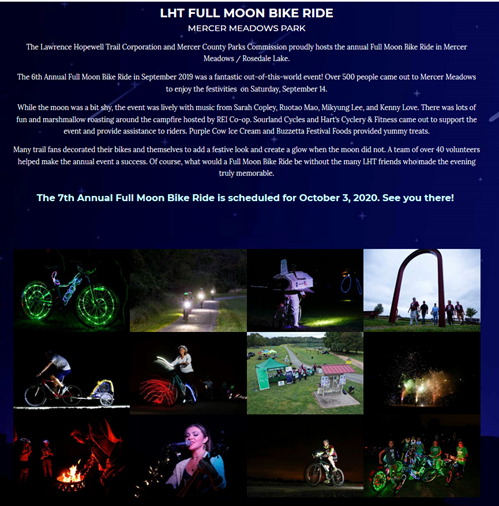
The Lawrence Hopewell Trail hosts an annual nighttime bike ride called the Full Moon ride. Their website contains a description as well as photos of past rides that capture the fun and whimsy of the event and that whet appetites for the next event.
Evaluate and Modify
How will you know when you have succeeded? That’s where evaluation comes in. Evaluation provides accountability for money spent as well as information for stakeholders, and helps to improve programming. Some funders have evaluation requirements, but in general, the type of evaluation depends on what decisions the organizer wants the analysis to help guide.
Evaluation involves deciding what success looks like as a reasonable outcome of the activity (i.e., indicators), and then collecting data to evaluate through interviews, questionnaires, surveys, or even observation and discussion. The results are analyzed and reported out—the number of participants in an event, number of volunteer hours committed, for example. Then comes recommendations for changes to program design or implementation.
Evaluation can be a struggle due to limited time and resources, but even a simple discussion of what went right and wrong after an event can provide insights for future activities. It’s helpful to have these discussions shortly after the event while feedback is top of mind.
Programs
For the purposes of this article, programs consist of ongoing, recurring and supervised activities. Trail advocates might initiate programs or events, or they might work other groups such as community groups, businesses, schools, libraries and farmers markets to host and market events on the trail. A mix of programming will attract a wide swathe of people.
Many programs predictably focus on health and wellness, including physical fitness, mental health and healthy food. These are naturally associated with trails. Walking clubs, bicycle riding classes or groups, and farmers markets are all potentially good partners for these programs. Trails have also been partnering with healthcare providers for Trail Rx and Prescribe-a-Trail programs, which often allow people to walk and talk with a health care professional on a range of different healthy living topics.
Another common theme is outdoor education. Trails often run through ecologically diverse places and are great vantage points for flora and fauna. Trail managers and advocates can work with nature centers, schools, environmental groups, and wildlife and birding clubs to design these programs. Nature hikes or guided tours, supplemented with interpretive signage, inform and teach trail users about the outdoors.
Other themes include arts, history and culture. Since programs are group events, they can provide that nudge for people who want to learn new skills, gain confidence or socialize while using the trail.
Events
You don’t have to wait until the trail is completed to start holding events. Volunteers can come together for workdays to help clear, build or beautify a section of a trail, for example. Prior to the completion of the Lafitte Greenway in New Orleans, the Friends of the Lafitte Corridor held an annual hike along the city-owned corridor to build awareness and momentum for the trail project. Local volunteers, called Greenway Ambassadors, would guide small groups on a tour of the corridor. Such tours can be helpful in converting skeptics and building the support of donors and elected officials.
Openings of new trails or trail extensions are also natural occasions for a celebration. These events simultaneously demonstrate appreciation for all the work provided by staff and volunteers and announce to the community that the trail exists and they are invited to use it. Activities on the opening day might include a fun walk, run or ride with food, prizes and activities for different ages.
While there is a lot of fun in coming up with innovative events, there’s no shame in borrowing ideas from others. With a little research, you might just be inspired. You don’t have to reinvent the wheel. Piggyback on existing holidays; for example, leading up to Easter, the trail might host an Easter Egg Hunt. On days of service (e.g., Martin Luther King Jr.’s birthday, 9/11 Day of Service), the trail might have volunteer events such as trail cleanups. There are even observed days that relate more directly to trails and the outdoors, such as National Trails Day, Earth Day, Arbor Day and RTC’s Celebrate Trails Day. Other days may be related, but may not necessarily be specifically trail events, such as Bike to Work days. In some cases, the trail might just be the conduit to the event venue itself.
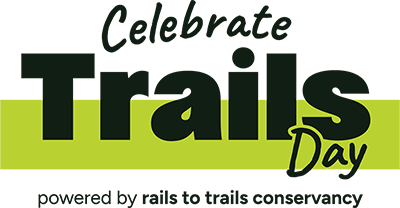
Celebrate Trails Day
Hosted on the fourth Saturday of April, Celebrate Trails Day is an annual spring celebration of America’s trails. Started by Rails to Trails Conservancy in 2013, the celebration encourages people all across the country to get outside and enjoy the nation’s exceptional trails and trail systems.
Events Policy
Organizations and individuals will often contact trail managers to inquire about hosting events on the trail. Trail managers should develop event policies that clearly outline whether or not an activity requires a permit and any other additional related requirements. These policies help safely manage and direct activities permitted on trails in order to minimize disruption for other trail users.
Some events require a permit based on their nature, the number of attendees or the potential to conflict with other trail uses. This is often referred to as a Special Use Permit, and it spells out any fees (rental fees, damage deposits) as well as requirements of the organizer vis-a-vis:
- Event insurance – Some trail managers insist on insurance for certain kinds of events. The liability insurance covers damage to property as well as bodily injury. The organizer may have to agree to take on legal liability for any accidents or incidents during the event.
- Cleanup and maintenance – The event organizer will have to organize for litter removal and trash pickup after the event. They might also be responsible for paying for or directly repairing damage to the trail and its amenities as a result of the event. The trail should be left in at least the condition it was prior to the event.
- Traffic/Parking management – How will the organizer manage the influx of people to the trail? Is there accessible parking, and have alternatives been provided?
- Emergency services – What arrangements has the organizer made for medical emergencies? Law enforcement?
- Restrooms – Will existing restrooms be enough, or does the organizer need to make arrangements for portable toilets?
- Other permits – These might be required for filming, using a public address system or employing food vendors.
Trail Activity During the COVID-19 Pandemic
“What we’re learning is that the outside is more important right now than it’s ever been before, and everyone is starting to realize what we’ve always known: These spaces are exceptionally critical to communities. And so there is a really important place for us to be sharing that message and to be sharing it responsibly in accordance with the appropriate guidelines from local public-health officials and the CDC.”
Brandi Horton, VP of Communications, Rails-to-Trails Conservancy, speaking during RTC’s webinar “Trail Use and Management During the COVID 19 Pandemic” March 26, 2020
The COVID-19 pandemic has demonstrated nationally that trails are more essential than ever. At the onset of the pandemic and in the months since, trail use swelled, with individuals and their households seeking out safe outdoor experiences to help cope with the heightened stress of the pandemic and maintain their physical and mental health.
The Centers for Disease Control and Prevention (CDC) and state and local public-health agencies provided guidance to help individuals avoid exposure and be safe while recreating outside. CDC recommendations for unvaccinated people visiting parks, trails and open spaces included visiting parks close to home rather than going to places that require longer travel; checking with the park or trail manager before you go; maintaining physical distancing from others not in your household; avoiding crowded parks and trails, and washing hands or using hand sanitizer. With so many new trail users, trail managers have also worked to educate the public about proper trail-use etiquette during the pandemic using social and traditional media, as well as by installing signage on the trail.
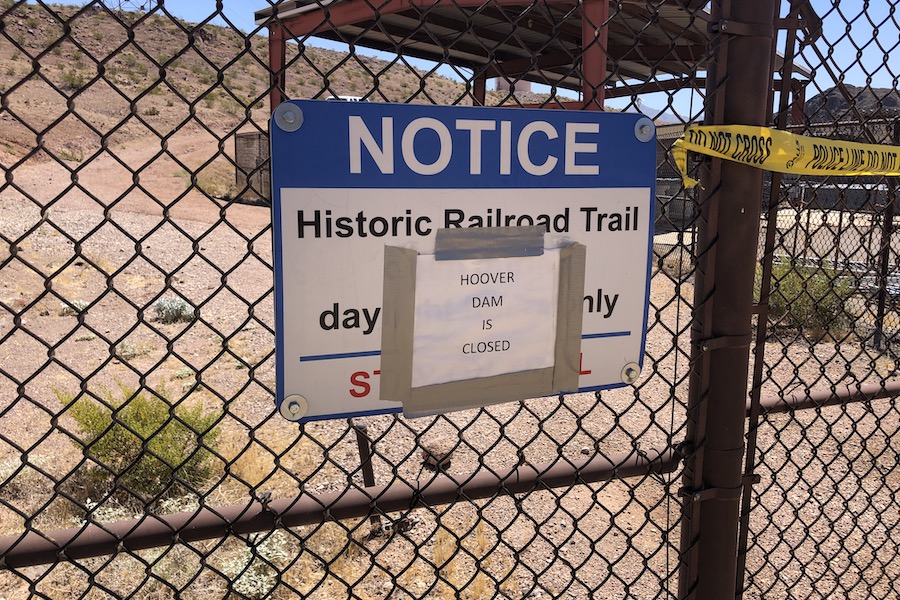
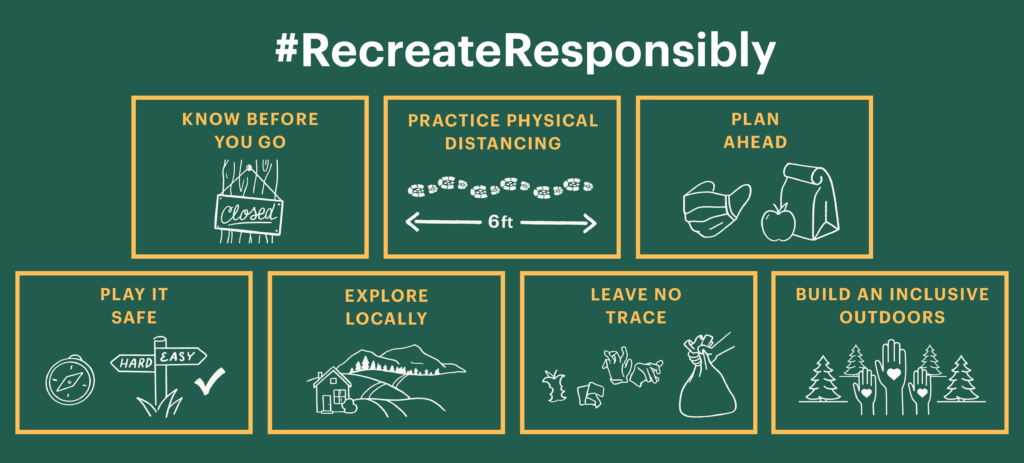
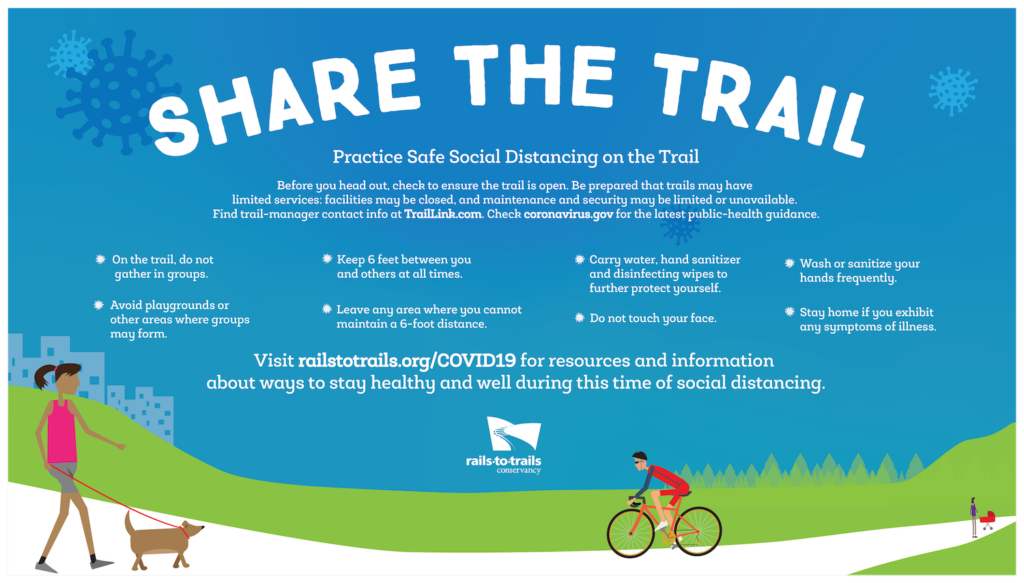
Many events and programs have been postponed or canceled due to the pandemic. The pandemic has also forced organizers to adapt their activities to prevent close contact between participants. Virtual activities have grown in popularity, as individuals can participate without having to congregate together. Some groups have used websites, mobile apps and social media to keep users engaged. This allows them to publicize events and lets participants report their progress by sharing photos or using fitness tracking apps like Strava and Map My Ride.
Creative virtual challenges can build excitement about outdoor recreation and can be used as fundraisers by way of participation fees. One challenge on the Cowboy Trail in Nebraska included collecting stickers placed on the mile markers along a section of the route. The Mon River Trails Conservancy’s Imagination Running Wild Challenge encouraged users to explore all 48 miles of their trail system within a six-month window and included a scavenger hunt as well as smartphone-based activities including a trail trivia quiz. The Great American Ride by Sportsbackers is a virtual bike relay race where team members work together to cover the length of the Great American Rail-Trail®, which will be 3,700 miles when complete. Participants track their individual rides, then log in those miles. Individuals don’t have to ride on the actual trails making up the Great American—instead they can ride close to home on a trail, road or track, or on a stationary bike. Each team member’s miles get their team closer to completing the full course.
Webinar exploring Open Streets during COVID-19 with examples from Philadelphia, Pennsylvania; Duluth, Minnesota; San Francisco, California; and Bogota, Columbia
The pandemic saw fewer people traveling to work. As car traffic decreased and usage of existing trails surged, dozens of cities across the United States and internationally took the opportunity to close select streets to vehicles to create more space for walking and biking, giving people enough space to be active outside while practicing appropriate social distancing. RTC provided advocacy tools and led national efforts to call on local officials to repurpose streets to create more space for people to safely be active.
The advocacy tools and RTC’s suite of COVID-19 Resources, including webinars, articles and trail data, can be found at railstotrails.org/COVID19.
For in-person activities organized on trails, public health considerations must be top of mind. Adjustments to how these events are run might include restricting registration to smaller numbers to allow for physical distancing, or extending the event over several days, weeks or months to avoid crowding; providing alternative parking to avoid congested lots; and closing restrooms and water fountains. For example, cleanup events might be spread over several days, giving volunteers the freedom to clean up any time within that period. Other requirements might include:
- Maintaining physical distancing
- Wearing masks
- Bringing own equipment
- Completing a health screening form
- Staying home if sick or exposed
Resources
‣ Webinar – Accessible and Inclusive Events and Programs on Multiuse Trails
‣ Blog – Celebrate Trails 2023: Showcasing the Impact of America’s Trails
‣ Blog – Plan These Top 10 Summer Trail Experiences with TrailLink
‣ Blog – 6 tips to share the trail and recreate responsibly
Celebrate Trails Day Stories
View More Blogs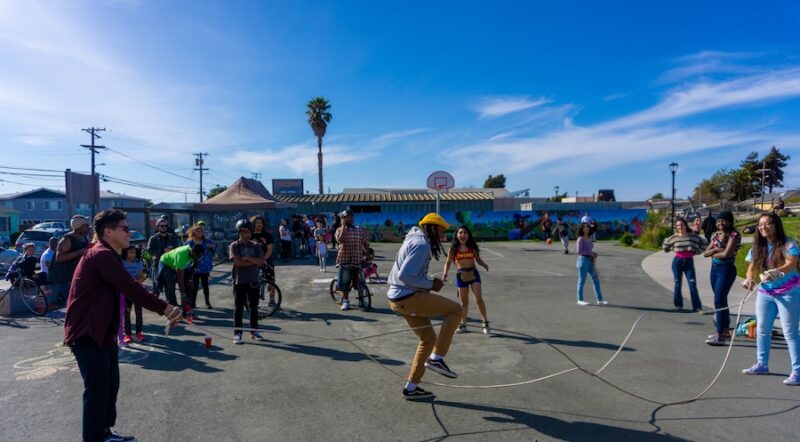
Seven Ways to Enjoy Your Favorite Trail
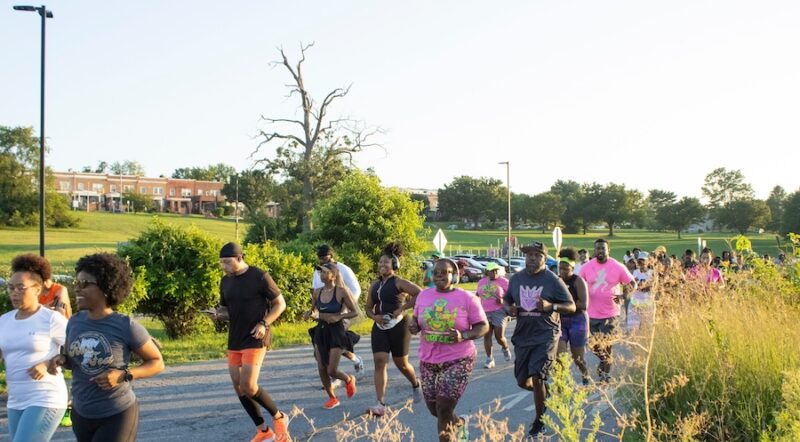
Five Reasons to Get Outside on Trails This Spring
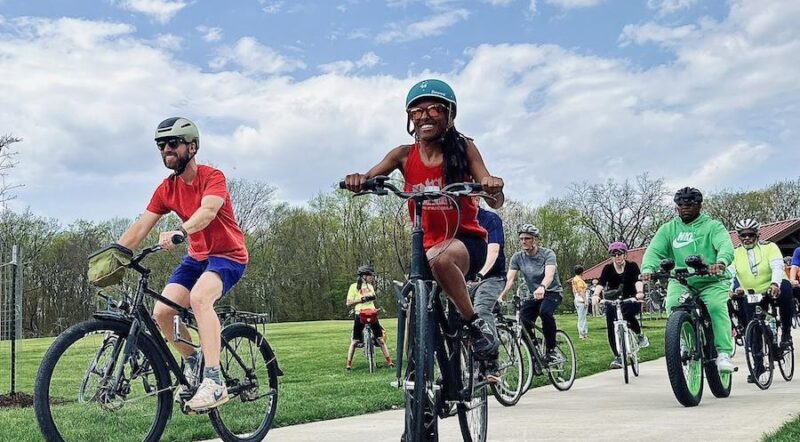
Leveraging Celebrate Trails Day Advocacy in Cuyahoga County
TrailNation Collaborative
TrailNation™ Collaborative is a nationwide peer learning community from Rails to Trails Conservancy that brings together advocates, leaders and professionals from across disciplines to establish and accelerate trail networks across America. The collaborative provides proven tools, methods and resources, combined with RTC’s expertise and network of partners across the country, to accelerate the development of connected trail systems. When trails are connected across regions and states, trail networks have a proven transformative impact—they are essential infrastructure that creates thriving, healthier communities.